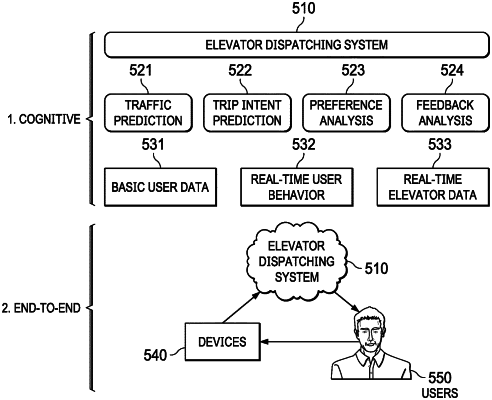| CPC B66B 1/2458 (2013.01) [B66B 1/468 (2013.01); B66B 5/0012 (2013.01); G05B 13/027 (2013.01); G05B 13/048 (2013.01); B66B 2201/20 (2013.01); B66B 2201/235 (2013.01); B66B 2201/243 (2013.01); B66B 2201/402 (2013.01); B66B 2201/403 (2013.01); B66B 2201/4638 (2013.01); B66B 2201/4653 (2013.01)] | 20 Claims |

|
1. A method of controlling elevator dispatch, comprising:
collecting, by a number of input devices, user data from a number of users, wherein the user data includes user behavior over a specified time period;
collecting, by an elevator control system, elevator use data for a number of elevators in a building over the specified time period;
constructing, by a number of processors applying the user data and elevator use data, an elevator dispatch model that predicts future elevator use according to predicted user needs;
dispatching, by the elevator control system, the elevators according to the dispatch model; and
refining, by a number of processors, the elevator dispatch model according to feedback data collected from users over a subsequent time period.
|